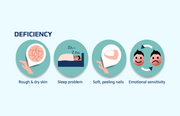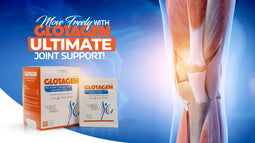
Omega-3 fatty acids are essential nutrients your body can’t make on its own—but desperately needs. In Pakistan, where dietary habits often lack these healthy fats, Omega-3 deficiency is more common than many realize. It can quietly affect your heart, skin, brain, joints, and even your mental clarity.
This blog highlights key signs of Omega-3 deficiency, how it impacts your body, and what steps you can take—including supplement options from SOIS Life Sciences—to restore balance and boost wellness naturally.
Why Omega-3s Matter for Your Health
Omega-3s, particularly EPA and DHA found in fish oil, are vital for:
-
Supporting heart and brain health
-
Reducing chronic inflammation
-
Enhancing skin hydration and glow
-
Regulating mood and cognitive performance
-
Improving joint flexibility and bone strength
Unfortunately, most people in Pakistan consume diets low in fish, chia, or flaxseeds—leading to silent deficiencies.
Common Signs You’re Low on Omega-3
1. Dry, Irritated Skin
Omega-3s help maintain skin's lipid barrier, preventing dryness and flaking.
2. Frequent Joint Pain or Stiffness
A lack of DHA and EPA can increase inflammation, worsening joint discomfort—especially in aging adults.
Try this:
Glotagen Collagen + Flexease Joint Support
3. Brain Fog or Trouble Concentrating
Low Omega-3 levels may impact neurotransmitter function, leading to memory lapses or poor focus.
4. Depression or Mood Swings
EPA plays a role in mental health. Deficiency has been linked to a higher risk of anxiety and depression.
5. Poor Eye Health or Blurred Vision
DHA is heavily concentrated in the retina. Inadequate levels can result in dryness or visual fatigue.
6. Increased Risk of Heart Disease
Low Omega-3 intake is directly associated with high triglycerides and blood pressure.
Support your heart health with:
Everseas OmegaC Boost with Vitamin C
Who Is Most at Risk in Pakistan?
-
Adults 30+ who don’t eat fish regularly
-
Diabetics and those with metabolic issues
-
Vegetarians and vegans
-
Individuals with digestive disorders (affecting nutrient absorption)
How to Test for Omega-3 Deficiency
There are blood tests like the Omega-3 Index, but even without testing, if you relate to multiple symptoms above, it’s worth taking action.
What to Do About It?
1. Increase Omega-3 Intake
Include fatty fish (like sardines and salmon), walnuts, flaxseeds, and chia seeds in your diet.
2. Use High-Quality Omega-3 Supplements
Top Halal Omega-3 Picks by SOIS Life Sciences:
-
Everseas Omega-3 Monthly Pack – For daily wellness
-
Ultra Strength Cod Liver Oil (2x Pack) – With additional Vitamin A & D
-
Everseas OmegaC Boost – For heart and immune support
View the full collection here:
Everseas Omega-3 Softgel Collection
Final Thoughts
If you experience brain fog, joint stiffness, or chronic skin issues, your body may be asking for more Omega-3. Addressing a deficiency is not just about symptom relief—it’s about long-term protection against inflammation, heart issues, and cognitive decline.
Omega-3 is one supplement that benefits virtually every system in your body—and it’s never too late to start.
📚 Research References
-
Harvard School of Public Health – Omega-3 Fats
-
National Institutes of Health (NIH) – Omega-3 Fatty Acids Fact Sheet
-
Mayo Clinic – Omega-3 in Disease Prevention




















